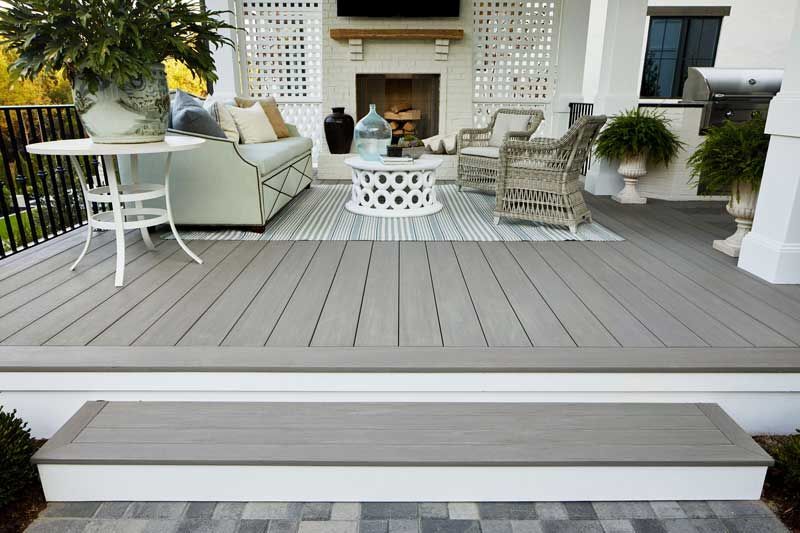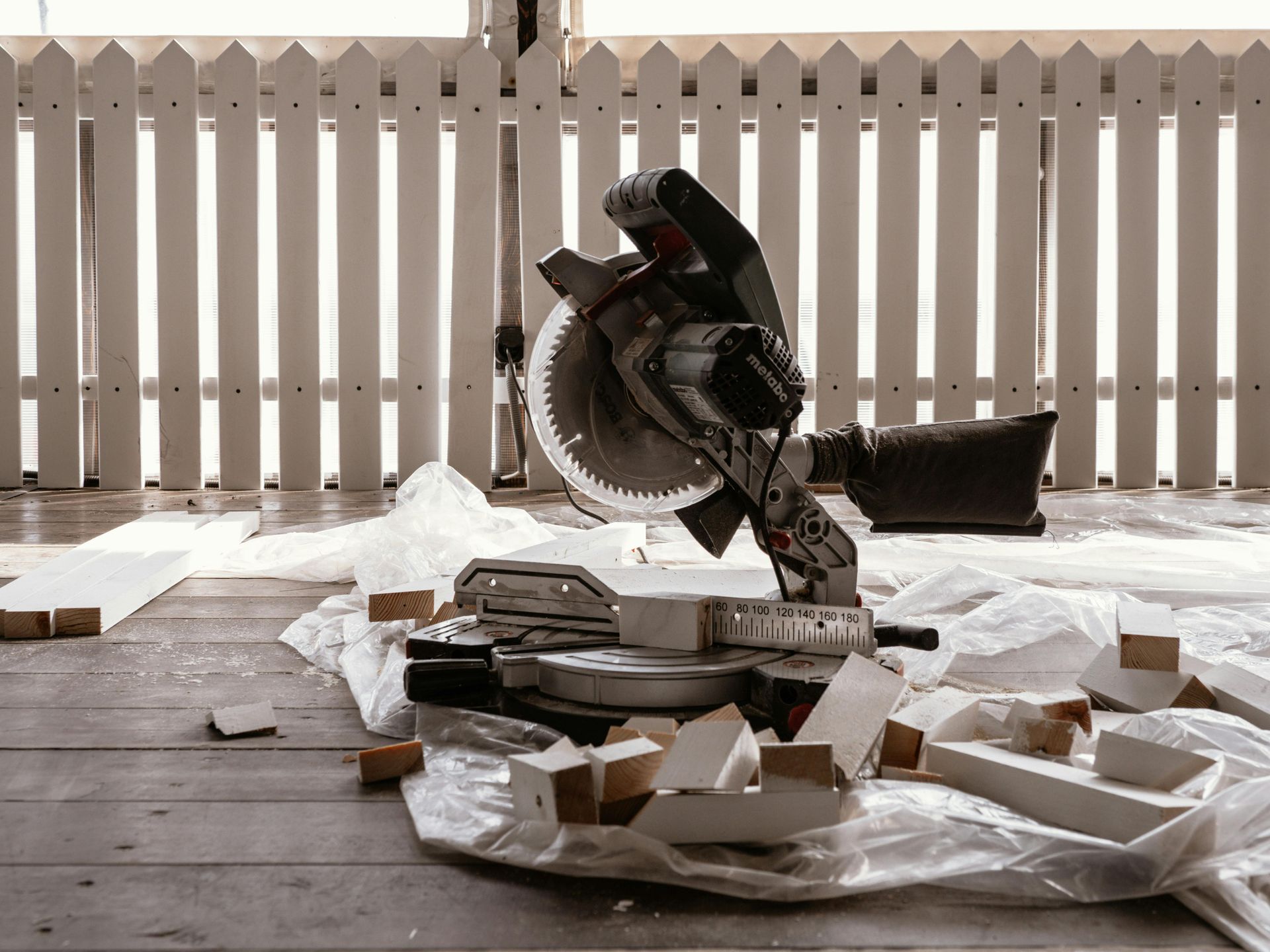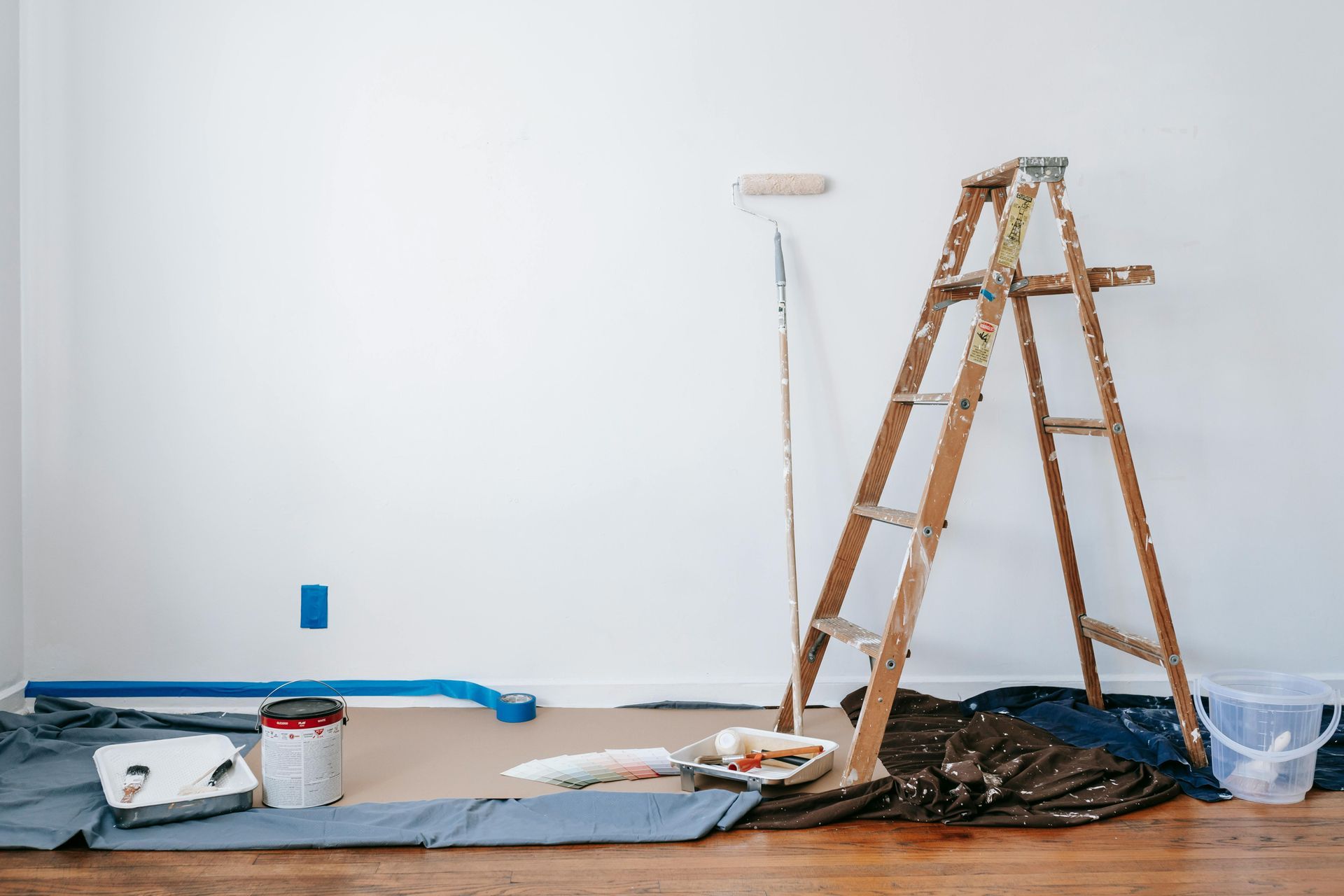What is The Best Decking Material?: Wood vs. Composite
Nearly 1 in 4 new homes in the U.S. includes a deck, and for good reason: a deck can return up to 70% of its cost in resale value. However, with many older decks nearing the end of their lifespan (approximately half are now 20 years or older), more homeowners are asking the same question: What is the best decking material?
The answer isn’t one-size-fits-all. Your choice depends on your budget, climate, and the amount of time you're willing to spend on maintenance. Some people love the natural warmth of wood, while others prefer the low-maintenance durability of composite. In this guide, we’ll explore both, highlight their benefits and drawbacks, and help you decide which material best suits your home and lifestyle.
Wood Decking: Classic Beauty with Natural Appeal
When homeowners ask what is the best wood decking material, the answer usually comes down to three main types: pressure-treated lumber, cedar, and redwood. Each offers natural charm and unique qualities that synthetic materials can’t fully replicate.
Benefits of Wood Decking
- Authentic look and feel: Wood’s warmth and grain patterns create a timeless appearance.
- Cost-friendly options: Pressure-treated lumber is among the most affordable choices for building a deck.
- Premium appeal: Cedar and redwood are naturally resistant to decay and insects while adding rich color and elegance.
- Customizable: Wood can be painted, stained, or left to weather naturally, giving homeowners flexibility in design.
Drawbacks of Wood Decking
- Requires regular upkeep: Sanding, staining, and sealing are necessary to preserve its appearance and durability.
- Vulnerable to moisture: Without maintenance, wood can warp, rot, or crack over time.
- Shorter lifespan: Even high-quality wood generally doesn’t last as long as composite.
Ideal usage
Wood is best suited for homeowners who want a traditional deck with natural beauty, don’t mind yearly maintenance, or are looking for a lower upfront cost.
Composite Decking: Modern Durability with Low Maintenance
Composite decking is made from a blend of recycled plastics and wood fibers. These boards withstand the elements while requiring minimal upkeep.
Benefits of Composite Decking
- Low maintenance: No sanding, staining, or sealing required—just occasional cleaning.
- Durability: Resistant to fading, staining, mold, and insect damage.
- Variety of styles: Available in a wide range of colors and finishes, many of which closely mimic natural wood.
- Eco-friendly: Often manufactured with recycled materials, making it a sustainable choice.
Drawbacks of Composite Decking
- Higher upfront cost compared to most wood options.
- Can retain heat, making it less comfortable to walk on in very hot climates.
- Some homeowners feel it lacks the authentic look and texture of natural wood.
Ideal usage
Composite works well for homeowners who prefer a low-maintenance deck, live in regions with extreme weather, or want to maximize long-term durability and value.
Comparing Wood and Composite: What is the Best Decking Material?
The answer depends on how the two stack up against your priorities. Here’s a breakdown:
Cost
- Wood: Lower upfront cost, especially with pressure-treated lumber.
- Composite: More expensive initially, but often pays off over time with less maintenance.
Durability
- Wood: Can last 10–20 years with consistent care.
- Composite: Often lasts 25–30 years or more with minimal upkeep.
Maintenance
- Wood: Requires regular staining and sealing.
- Composite: Occasional washing is usually enough.
Aesthetics
- Wood: Authentic natural grain and warmth.
- Composite: Wide variety of colors and finishes, though less “organic” in feel.
Sustainability
- Wood: Renewable and biodegradable if sourced responsibly.
- Composite: Often made from recycled plastics and reclaimed wood fibers.
Climate Suitability
- Wood: Performs best in dry climates.
- Composite: Ideal for wet, humid, or very sunny regions.
In other words, if you’re looking for the best deck material on a budget and enjoy hands-on projects, wood is your best bet. However, if you prefer convenience and long-term reliability, a composite may be worth the investment.
Trends and Sustainability in Decking
Beyond performance, many homeowners today also consider style and environmental impact when selecting the best material for decks.
Popular trends include:
- Wider boards for a modern, sleek look.
- Mixed materials such as combining wood with metal or composite accents.
- Multi-tone patterns using different composite shades for borders or inlays.
Sustainability highlights:
- Responsibly harvested wood supports renewable forestry.
- Composite decking helps reduce plastic waste by repurposing recycled materials.
Both materials can be environmentally responsible, so your decision can align with eco-conscious values no matter which way you go.
What Is The Best Composite Decking Material?
Not sure which way to go? Here are some practical tips to help you decide.
- Think about your lifestyle: Do you enjoy DIY upkeep projects, or would you rather spend your weekends relaxing on the deck?
- Consider your climate: Wood may work well in drier areas, while composite is often better in humid or sun-heavy regions.
- Look at long-term value: Wood saves money upfront; composite saves time and cost in maintenance over the years.
- Match your style: Wood gives you unmatched authenticity, while composite offers more consistent colors and finishes.
By weighing these factors, you can identify the material that fits your home and needs best.
Making the Right Choice for Your Deck
So, what is the best material for decking? There’s no universal winner, just the best choice for your lifestyle. Wood offers classic beauty and affordability but requires upkeep. Composite provides modern durability and convenience, though it comes at a higher initial cost.
If you want a traditional, natural look and don’t mind regular maintenance, wood is a great option. If you prefer a low-maintenance, long-lasting solution, composite might be the smarter investment.
Either way, choosing the right deck material ensures you’ll enjoy years of outdoor living on a deck that adds beauty and value to your home. If you’re ready to explore your options,Budget Home Supply in Longmont, CO, offers both wood and composite decking, so you can compare side by side and choose the material that’s right for your home.





